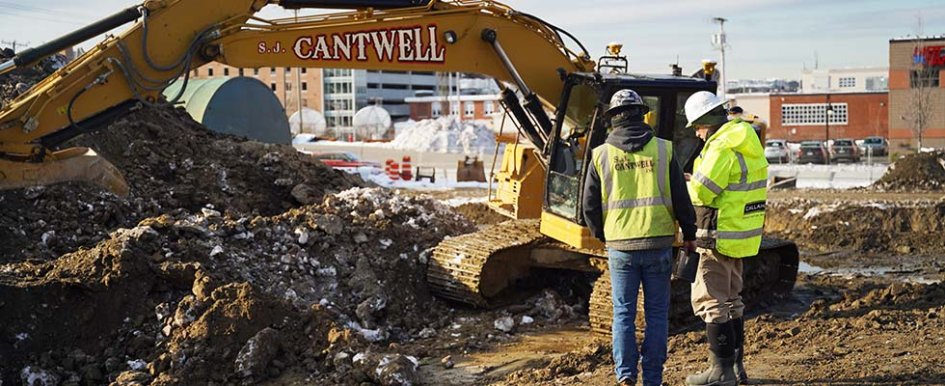
“Slow” and “clunky” are adjectives Jeff Sparkowich used to describe estimating with spreadsheets. The estimator at New Hampshire dismantling and sitework contractor S.J. Cantwell says switching to specialized software cut his estimating time in half and increased estimating accuracy by 30%.
Travis Snow, project manager at Feller Enterprises, an excavation and site development specialist based in Utah, concurred. “Adding specialized estimating software allowed us to bid much more accurately and much faster than with Excel,” he explained. “In the past, we would see profit fade due to missed costs on the bid. Now, profits stay very close to what we estimated.”
Being able to pull in pre-populated cost items along with tasks and templates are keys to the speed and accuracy advantages, according to Sparkowich and Snow. With the specialized software, contractors set up databases with their costs for labor, materials and equipment in advance, and group these cost items into frequently used templates or cost structures.
With these building blocks already in place, estimators can pull information from these databases to match the bid specifications quickly and with confidence in their accuracy. This also eliminates risky spreadsheet liabilities like formula errors and miscalculations, and features like automated auditing and error checking provide further safeguards
against errors.
Sparkowich handles all the estimating at S.J. Cantwell. He sometimes completes multiple bids for smaller demolition jobs in a day, while bids for sitework projects with complex takeoff and subcontractor components can take several days. “I don’t believe I’d be able to put out as much as I do without a junior estimator if I did not have the software,” he said. “The amount of time it would take me to collect every little bit of information, get every crew correct, make sure all my formats were where I want them to be, would be substantial. Now, I can do my takeoff, throw it right into the estimating software and my items are already built, and then it is done.”
Cohesive Estimating & Field Tracking Software
Feller and S.J. Cantwell also added field tracking software to complement estimating applications. The combination gives them the estimating advantage of easily reviewing actual past performance from field logs and using that information to fine-tune bids.
“It’s huge for us to have both estimating and field tracking software, and the feature that’s the biggest for me is the production history,” said Sparkowich. The production rate actuals feature allows him to filter data from past jobs to zero in on factors and conditions similar to the requirements of the upcoming job. “Over time, as it dials in, I can really determine what we can do in a certain amount of time, which just makes me more accurate and us more profitable,” he added.
“I can see the line-item detail on previous jobs,” Snow explained. “I get my foremen and superintendents involved
with the bidding side to get their input on production rates and what machines and crews they want based on how they
ran previous jobs.”
Feller Enterprises added field tracking software before estimating software to solve what it saw as its most critical challenge: assessing performance in the field in a timely manner and at a level of detail that would allow operational changes to be made while there was still time to impact the profitability of a job.
Snow previously retrieved production quantities from foremen, labor hours from a separate payroll system and equipment hours from a third system. He then entered this data into a custom spreadsheet he created, which could show him profitability for the whole job, but not for individual tracking accounts.
Field tracking software now captures all of that production, labor and equipment utilization data daily on electronic field logs. Importantly, a user can report on that data immediately. That provides a summary not only of how each job is performing, but also how each line item or production account is performing. Foremen at Feller use a mobile app to compare progress on tracking accounts against quantities that were bid. Snow said this inspires them to take more responsibility for profitability.
“They like to look at the summary reporting in the field tracking software and make sure they are staying at or as close as they can to estimated costs,” he explained. “We even set goals and award bonuses based on their actual in-field performance versus what we estimated.”
The situation is similar at S.J. Cantwell. Foremen and crews look at performance-versus-plan numbers daily and have established an informal competition to stay ahead of plan or to improve over time. Information from the estimating software also allows them to see more precisely how jobs were bid and to plan operations in the field accordingly.
“For us, it was very important to have software that communicates within itself at many different levels,” Sparkowich said. “With the estimating and field tracking software, they’re two different worlds, but they communicate very well.”
Construction logic and a user interface that “just makes sense” to estimators can make the transition from spreadsheets to specialized software easy.
“What’s nice is, it can be as simple or as complex as you want,” Sparkowich concluded. “We were able to start with the basics, walk our way into it and then progress to using more and more of the advanced features.”
